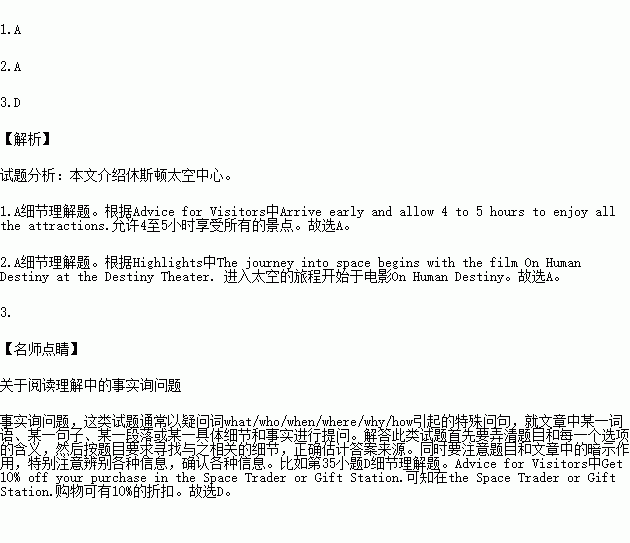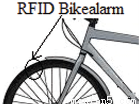题目内容
Space Center Houston
Space Center Houston is an official visitors’ center of NASA’s Johnson Space Center. Touch a real moon rock. See astronauts train on a behind-the-scenes tour of NASA. It’s an out-of-this –world experience for all ages. | |
Prices Adult: ages 12+, $46 Child: ages 3-11, $36 Beginning July 1, Space Center Houston attractions will remain the same, but our price will increase: Adult, $49; Child 3-11, $39 through February 28, 2015. You can get tickets online or at the main entrance. | |
Highlights ? The journey into space begins with the film On Human Destiny at the Destiny Theater. ? The NASA Tram Tour, a 90-minute behind-the-scenes tour, takes you to real working areas of Johnson Space Center. ? Experience the thrill of launching into space like a real astronaut in the Blast-Off Theater. ? Kids Space Place is perfect for children of all ages who have dreamed of being an astronaut. | Advice for Visitors ? Arrive early and allow 4 to 5 hours to enjoy all the attractions. ? Take the NASA Guided Tram Tour to see Rocket Park, the Historic Apollo Mission Control Center and astronauts train. ? Buildings visited on Tram Tour are real working areas of Johnson Space Center and subject to close without notice. ? Get 10% off your purchase in the Space Trader or Gift Station. |
On-site Services Parking: Paid parking available Dining: Zero-G Diner Gift Shops: Space Trader and Gift Station | Opening hours Open daily, 10am-5pm. Closed at Christmas. |
Group Requirements Groups of 15 or more: Call (281) 283-4755. | |
1.Which of the following is TRUE?
A. It will usually take 4 to 5 hours for visitors to enjoy all the attractions.
B. Visitors to Space Center Houston can buy tickets only by calling or online.
C. Space Center Houston is suitable for families to visit together at Christmas.
D. John and his wife will spend $92 if they visit Space Center Houston in January 2015.
2.How does a visitor begin his journey into space at Space Center Houston?
A. By seeing the film On Human Destiny.
B. By visiting the real working areas.
C. By visiting Kids Space Place.
D. By taking the NASA Tram Tour.
3.At Space Center Houston, visitors can ________.
A. park the car free of charge
B. stay there for at most 5 hours
C. visit the real working areas anytime
D. shop at a 10% discount in the Gift Station
 天天向上一本好卷系列答案
天天向上一本好卷系列答案 小学生10分钟应用题系列答案
小学生10分钟应用题系列答案

 B.
B. 
 D.
D. 